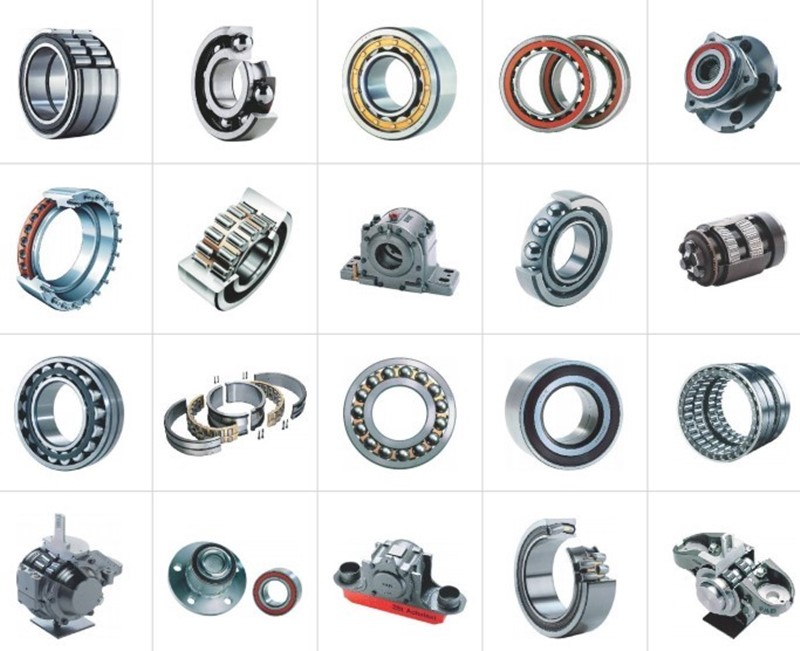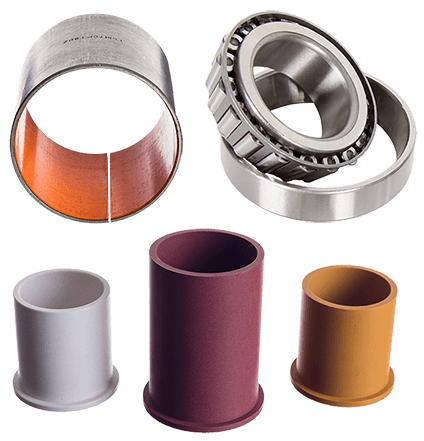Little Known Questions About Volution Bearing.
Wiki Article
A Biased View of Volution Bearing
Table of ContentsHow Volution Bearing can Save You Time, Stress, and Money.The Ultimate Guide To Volution BearingThe 7-Minute Rule for Volution BearingLittle Known Facts About Volution Bearing.
The temperatures shown are those of the bearing elements themselves, which are usually more than the ambient temperature level of the application. For temperature factors in between the worths shown, direct interpolation might be used - https://anotepad.com/note/read/6j5dsg3a. Imbalance of a bearing normally takes place for two reasons: Housings are statically misaligned Shaft disperses or bends under tons Generally, imbalance is not a great point for rolling element bearings that are not especially developed to accommodate imbalanceMisalignment above this will result in L10 lives less than that calculated. Spherical roller bearings and self-aligning thrust bearings are particularly developed to accommodate misalignment. Self-aligning cylindrical roller bearings can likewise fit some misalignment these bearings. This kind of bearing is located in the "Customized" bearings area. These unique bearing types can fit misalignments from 1.0 to 1.5.
Section elevations and capabilities increase accordingly. Area elevation is simply the radial measurement in between a bearing's bore and its outside diameter, right into which should be fitted an internal race, rounds or rollers, and an outer race. A properly created birthing balances the thicknesses of both races with the rolling aspect size in order to maximize Dynamic Capability without significantly decreasing the architectural strength of the races.
Volution Bearing Fundamentals Explained
Generally, for a birthing to appropriately run, the inner and outer races need to be appropriately sustained by the shaft and housing. The nature of the design of some types of devices does not always enable this. As reviewed in the imbalance section, often substantial shaft deflection can take place triggering imbalance.All of these impacts have a tendency to minimize the theoretical life of the bearing, but with proper analysis and unique inner style, this reduction can be reduced. Most bearing systems use 2 or three bearings in order to support a shaft under radial and drive lots. The number of bearings depends on whether one bearing is likewise capable of taking a thrust load.
When there is a significant range in between two support bearings, distinctions in thermal growth between the shaft and the housing call for that a person bearing be the locating or propelled bearing and the various other be a "float" bearing. A stack-up of axial tolerances in between the two birthing places needs to have one birthing "float" axially so that a parasitic drive tons is not created.
Some Known Questions About Volution Bearing.
Axial float is conveniently accommodated by the lubricated rollers gliding on the straight go to website roller path. If another kind of bearing is utilized, such as a deep groove ball bearing, dual row angular call bearing, TDO tapered roller bearing or spherical roller bearing, the typical technique is to allow the external races of these bearings to move in the real estate bore.
The world of engineering and equipment completely relies on various technological items, yet bearings hold an unique place in all. They are little components that play an important function in enabling smooth controlled movement, decreasing rubbing, and making sure efficient energy transfer. And also, not all the bearings are equivalent, they are dispersed according to form and dimension.

Ball bearings are created in such a means, that it permits efficient load circulation and smooth turning. The activity of machinery elements is profited by round bearings.
Unknown Facts About Volution Bearing
Different types of bearings serve different applications. Some of the usual variants are round bearings, drive sphere bearings, angular get in touch with sphere bearings, and deep groove sphere bearings.They are specialized rolling element bearings designed to handle both radial and axial lots, as they have their external and inner rings tapered. Likewise known as sleeve bearings or bushings, they are bearings that operate the concept of gliding movement greater than rolling elements. They are a kind of rolling bearing designed to offer reliable assistance for radial lots that enable rotational movement.

Report this wiki page